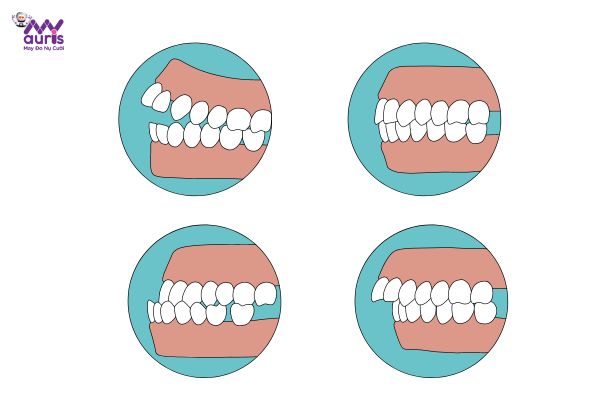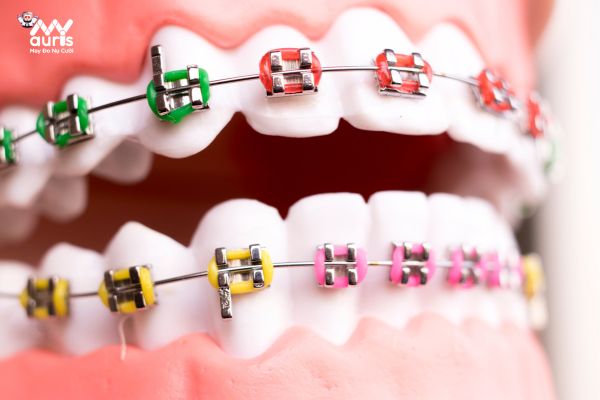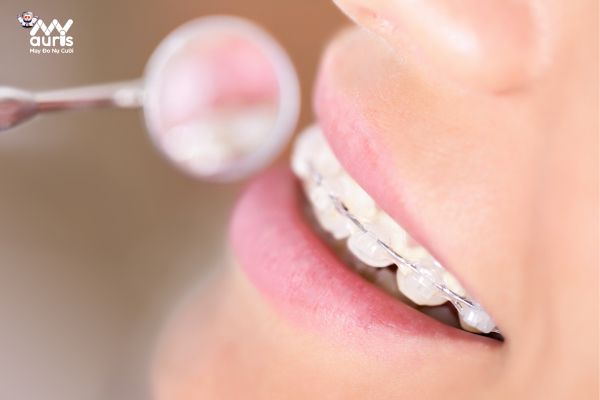Bite misalignment not only causes loss of aesthetics but also greatly affects oral health. Braces are one of the solutions to help adjust the teeth to the correct position on the jaw, standardizing the physiological bite. Join My Auris to learn about braces to correct bite to improve aesthetics and chewing function more effectively.
What is misaligned teeth?
Tooth misalignment has many levels, ranging from mild to complex. Regardless of the level, it causes many effects on aesthetics and oral health.
Tooth misalignment is a condition of misalignment and loss of relationship between the upper and lower teeth. Bite misalignment is a common condition, and early correction will bring more health benefits.
There are different types of malocclusion today:
- Crooked teeth: this malocclusion condition is where the upper teeth protrude more outward than the lower teeth. Viewed from an angle, the upper teeth completely hug the lower teeth, making the face look rougher and unbalanced. Buckled teeth are classified as a type 1 deviation.
- Reverse bite: the lower teeth protrude outward, out of balance with the upper teeth and are covered by the entire lower teeth. When viewed from the side, the face appears broken in the middle and is often called a plowshare face. This deviation is classified as a type 2 deviation.
- Apical bite: also known as a head-to-head bite, is classified as a type 3 malocclusion – this is a mild malocclusion of an underbite. Because the upper incisors group touches the lower incisors group when at rest.
- Open bite: this is a fairly common deviation, classified as a type 4 deviation and easily observed. When biting, the inner jaw fits tightly together, but the incisors on the upper and lower jaw cannot close, creating a gap and the tongue can be seen when the teeth are at rest.
- Deep bite: is a misaligned condition classified as type 5. This condition is imbalanced between the two jaws because the upper teeth cover the lower teeth, the edges of the lower teeth touch the inner gums of the upper jaw. Therefore, people with a deep bite are susceptible to temporomandibular arthritis, which causes pain and discomfort.
- Cross bite: this is also a common malocclusion condition, classified as class 6 malocclusion. This condition can see the teeth on the jaw misaligned in different groups, causing the jaw to be unharmonious and the teeth to be unbalanced.

Most of these malocclusions greatly affect aesthetics and oral health. Correcting malocclusions as soon as possible will both improve aesthetics and improve the smile and chew effectively.
Are braces for bite correction effective?
According to dentists, to correct bite misalignment, braces are the most optimal method The force from the appliance aligns and aligns the teeth to the correct position on the jaw. From there, the teeth align properly, providing aesthetics and effective chewing, especially easy cleaning, preventing dental diseases, etc other.
For class 1 and 3 malocclusions
This is a mild malocclusion so the treatment is relatively simple, in these cases, the doctor will perform orthodontic braces to straighten the teeth and balance the bite to a physiological standard overbite, overbite or opposing bite, the upper and lower teeth will be in correlation and balance, helping the face to be more harmonious.
For class 2 and 5 malocclusions
Class 2 and 5 malocclusions are complex malocclusions It will take longer than types 1 and 3. Furthermore, complex misalignments also require choosing the right orthodontic device to effectively correct them.
In case the misalignment is caused by teeth, doctors will perform orthodontic braces and align the bite advantage.
For open bites
Open bite is the most severe and difficult to treat orthodontic condition and usually only metal braces are effective.
So bite correction braces is the optimal solution for aligning teeth and rebalancing the bite on the jaw. However, depending on the type of malocclusion and the level, there are different treatment methods and time. To determine your condition and which treatment method to apply, choose a reputable dentist and make sure to have an examination. okay.
Braces methods to correct bite
Braces using gasheadstock to apply traction to align the teeth. Appliances can be fixed such as braces and wires or removable such as transparent braces. Each type of orthodontic appliance has its own advantages and disadvantages.
Metal braces
Bracket correction with metal braces is a method chosen by many people. The method brings many advantages: reasonable price, high durability, strong force resistance, shortening orthodontic time.
However, metal braces and elastic bands do not ensure aesthetics and are easily revealed when smiling, talking, and communicating. Some people with sensitive skin are even susceptible to irritation.

Ceramic braces
Braces Ceramic works similarly to metal braces, but the material of the braces is different. Because braces are made from porcelain. The color of porcelain matches tooth enamel, so it is more aesthetically pleasing than metal braces.
Ceramic braces cost more, but are fragile when subjected to strong impacts, so the force will not pull as strongly as metal braces. Therefore, the orthodontic time will be longer, so people with severe bite misalignment should pay attention.

Automatic braces
Automatic braces Improved based on traditional braces with automatic opening and closing system on the braces. This allows the wire to slide freely in the bracket groove without the need for elastic bands to hold it in place. Automatic braces are highly effective, shorten orthodontic time and reduce pain-causing friction during braces.
However, the cost is higher than traditional braces and will still not be appreciated aesthetically.

Transparent braces
Clear braces are also called removable braces because they use trays that are flexible removable devices. From there, it brings convenience during the orthodontic process: reducing pain, reduced friction, high aesthetics, easier to eat, easier to clean teeth.
However, currently there are many types of braces produced by many different brands, so people with braces need to consult and research carefully before choosing.

Hopefully with the information in This article aboutbite correction helps people better understand this misalignment. To determine the condition and choose the appropriate treatment method, people should see a dentist immediately for consultation and appointment Thy





